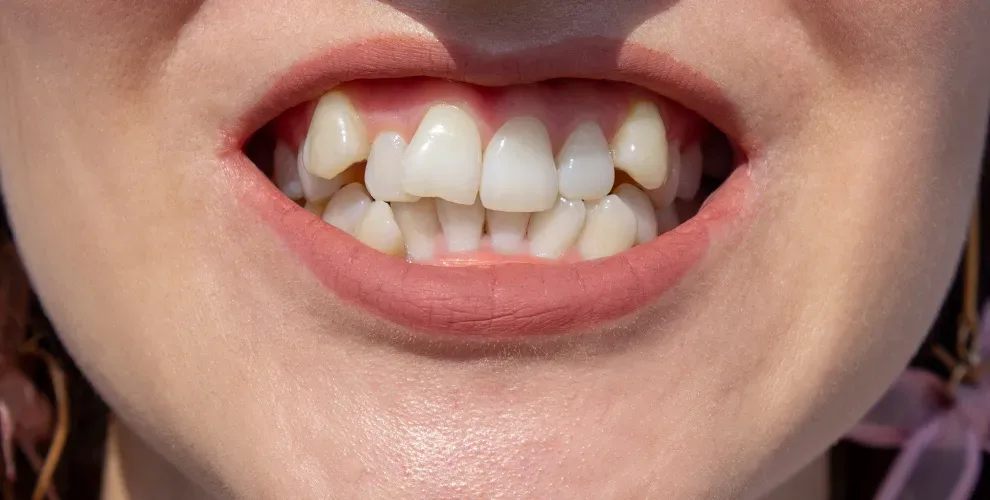Teeth Growing in Your Gums - Can an Aligner Fix Hyperdontia?

Table of Contents
- What Is Hyperdontia?
- Causes
- How Common is It?
- Will I Need Surgery?
- Treatment Options
- Can It be Treated with an Aligner or Braces?
Hyperdontia (having extra teeth on the upper or lower jaw) can affect someone at any age and can cause a number of dental problems. Also called supernumerary teeth (ST), any excess teeth may require removal or at least monitoring for some time. Braces, aligners, and surgery may be an option for some patients with this condition.
If your child has hyperdontia, you should take them to a dentist as soon as possible. Early detection and treatment can prevent disruption to their dental development.
What Is Hyperdontia?
Unless you have a missing tooth, you should have 16 teeth on both the upper and lower jaw, if you’re an adult. Hyperdontia is a condition in which an adult has have more than more than 32 teeth in their mouth. Children who have this condition have a good reason for having it: they are still retaining extra baby teeth (primary teeth).
There is a bit of randomness about having too many teeth. There’s no consistent pattern about which teeth are extra, or supernumerary. They can be canines or molars. And hyperdontia can develop in any part of the lower or upper arch.
Sometimes the additional tooth grows out through the gum, where it’s conspicuously visible. It may be unsightly, with an abnormal shape or size.
In other cases, the supernumerary remains under the gum and can only detected by an X-ray or by another imaging technique. Sometimes the person does not even know they have an extra tooth, although often the condition produces pain and discomfort when the tooth grows and crowds into other teeth.
Dental Issues Caused by Hyperdontia
Too many teeth can cause several dental or teething problems, whether the extra ones come through into the mouth or are buried under the gum.
Issues include:
Failure of other teeth to come in
Permanent displacement of teeth
Crowded teeth
Dental cysts
Other tooth damage
Obstruction of necessary dental procedures
Possible Causes of Hyperdontia
It’s not clear what causes supernumerary teeth, but there are several theories. These include:
Split tooth bud
Hyperactive dental lamina
Genetics
How Common is Hyperdontia?
How common ST is generally varies by factors like gender and ancestry. Here are some statistics on the disorder’s prevalence rate:
1 to 3 percent of the Caucasian population has ST
3 percent of Asians have ST
For every female with ST, two males have the anomaly
Mesiodens, which affects the front upper teeth (central incisors), is the most common type of ST
People without associated disorders like Gardner syndrome rarely have more than one ST
ST is five times less common in adult teeth than baby teeth
Will You Need Surgery?
Surgery is the primary medical intervention for ST, but it may be unnecessary or unviable for some patients. Your dentist may recommend this procedure to achieve either or both of the following:
Extract the supernumerary tooth
Expose the impacted tooth if it fails to erupt
Sometimes, it’s best not to remove the ST right away. Instead, your dentist will recommend periodic evaluations.
The problematic tooth may be removed later if potential complications are discovered.
Treatment Options for Supernumerary Teeth
Your dentist will probably use a CT scan or X-ray to assess the characteristics of your ST and the teeth/tissue around it. This information enables them to determine whether you’re candidate for surgery.
Surgical Extraction
Removal of the supernumerary tooth may be necessary if:
The ST has impacted a central incisor, preventing its eruption
Displacement of central incisors has occurred
There’s an associated disorder/disease
To allow a cleft lip/palate patient to have alveolar bone grafting
The impacted tooth is severely damaged
Surgical Exposure
Normally, ST removal allows the impacted tooth to erupt. If eruption doesn’t occur, the tooth may require surgical exposure.
General steps for this procedure include:
Your orthodontist creates arch space if there’s none at the site of the impacted tooth. Distalizing appliances may be used to achieve this by shifting adjacent teeth.
After space has been made, the surgeon injects numbing medication into the site of surgery.
Incisions are made into the arch to expose the tooth’s crown.
Brackets are attached (bonded) onto your teeth.
An orthodontic bracket is attached to the crown.
Elastic traction is applied. This eventually forces the impacted tooth to properly erupt into the dental arch.
Before agreeing to this treatment, consider:
Dental alignment and traction may take up to three years to produce the final outcome you desire
Lengthy surgery and orthodontic treatment may increase your costs
Consider removal rather than surgical exposure if the unerupted tooth is severely deformed and unsalvageable
Your surgeon may not recommend the surgical exposure of deeply buried teeth if it may harm otherwise healthy dental tissues or structures
Can Hyperdontia be Treated with an Aligner or Braces?
Braces and teeth aligners can be part of your overall ST treatment plan. You may need them to correct teeth misalignment due to ST.
